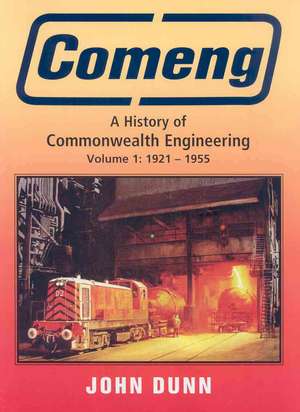Comeng
Autor John Dunnen Limba Engleză Hardback – 31 iul 2006
Preț: 250.73 lei
Nou
Puncte Express: 376
Preț estimativ în valută:
47.98€ • 52.28$ • 40.43£
47.98€ • 52.28$ • 40.43£
Carte indisponibilă temporar
Doresc să fiu notificat când acest titlu va fi disponibil:
Se trimite...
Preluare comenzi: 021 569.72.76
Specificații
ISBN-13: 9781877058424
ISBN-10: 1877058424
Pagini: 316
Ilustrații: 500 colour & b/w photos
Dimensiuni: 220 x 297 x 22 mm
Greutate: 0 kg
Ediția:New.
Editura: Rosenberg Publishing
ISBN-10: 1877058424
Pagini: 316
Ilustrații: 500 colour & b/w photos
Dimensiuni: 220 x 297 x 22 mm
Greutate: 0 kg
Ediția:New.
Editura: Rosenberg Publishing
Cuprins
Preface; Camperdown Beginnings; Buses, Cars and a New Factory; The Company Reborn; The Move to Granville; Impact of the War; Federal Government Intervention; Post-War Book Begins; Canberra Takes Over; Buses, Trams and a Royal Train; Bus-Building Alliances; Railway Work Dominates; Comeng Queensland Takes Off; A Lost Venture, New Goals; Unions and Managers; 1950s Granville Snapshot; Granville Slowdown, Enter Bassendean; Dandenong Launched, Rocklea Expands; Index.
